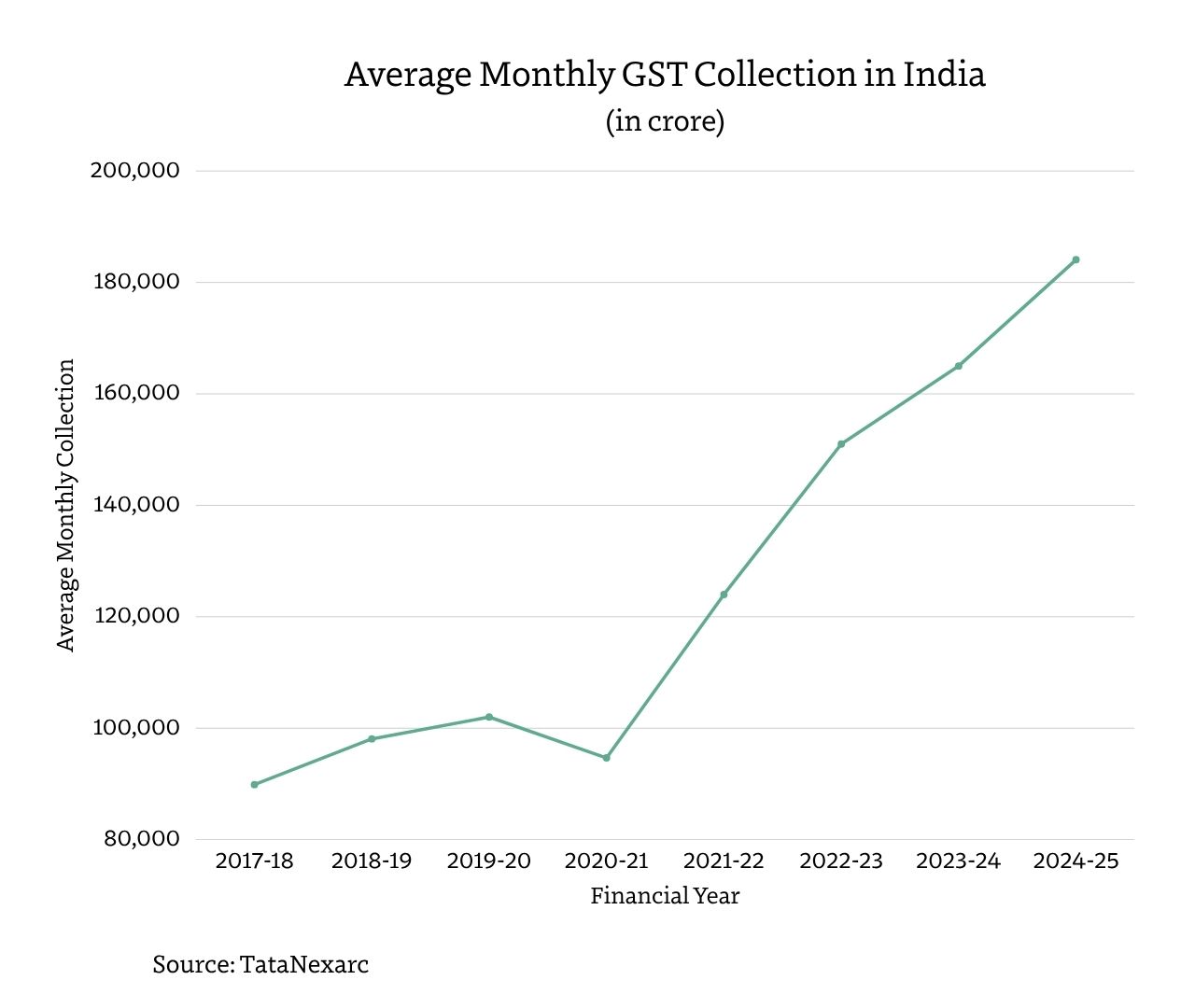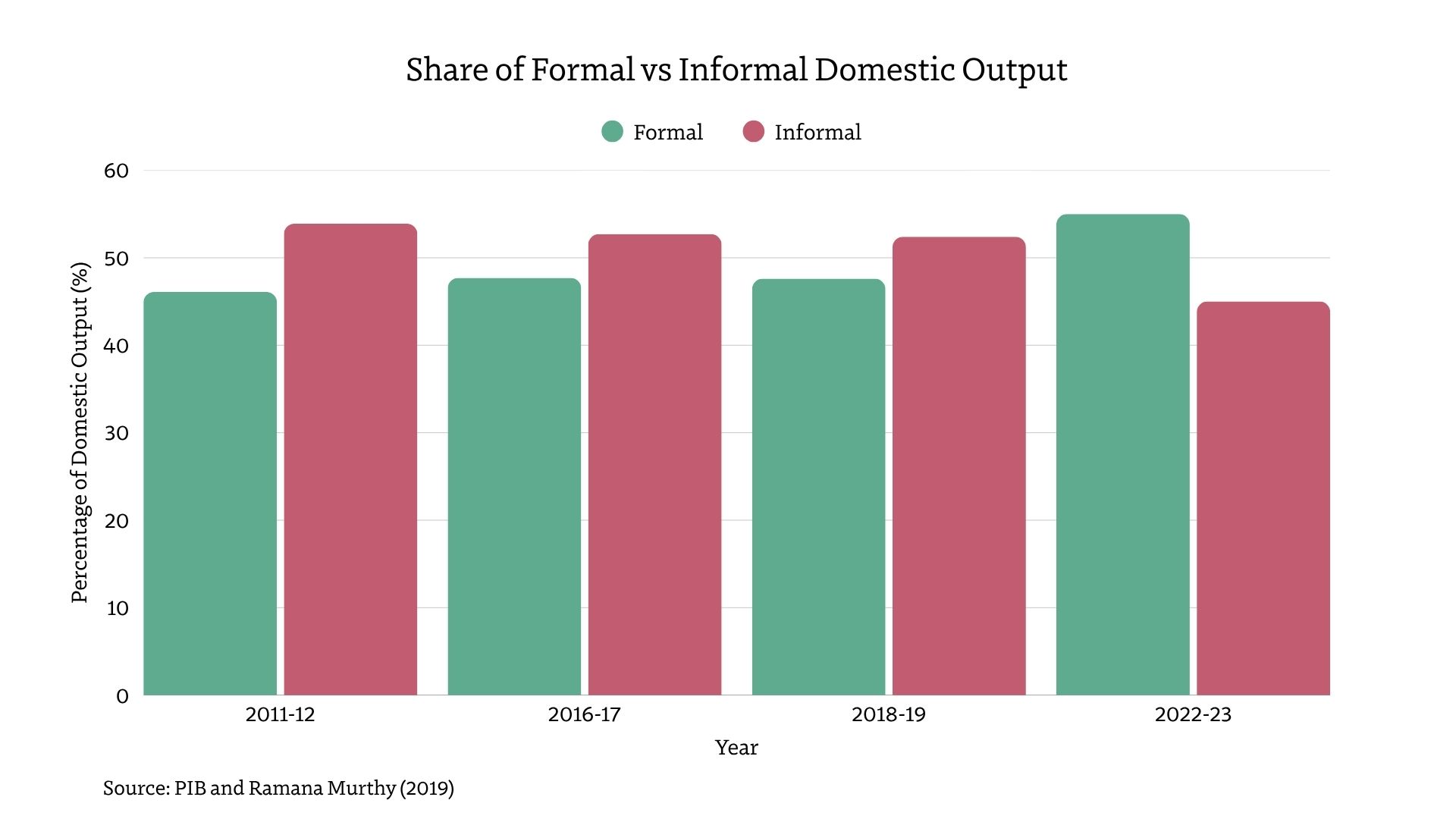India's GST Revolution: The Digital Tax Infrastructure That Unlocked a Trillion-Dollar Economy
India achieved in 8 years what took Europe decades to accomplish: the creation of a unified digital tax system serving 1.4 billion people across 28 states and 8 union territories. The Goods and Services Tax (GST), introduced in July 2017, has transformed India into the world's largest single market measured by population.
Before GST: A Fragmented Tax Nightmare
Before the 2017 rollout of GST, India's indirect tax system was fragmented and complex. Each state imposed its own taxes, duties, and border checkpoints. Goods traveling across state lines faced inspections and paperwork, creating bottlenecks and adding costs.
Companies often maintained separate warehouses in every state to avoid cascading taxes. The compliance burden made scaling across India costly and uncertain — and the informal economy thrived as they avoided formal taxation. This fragmented tax regime constrained productivity, competitiveness, and investment.
One Nation, One Tax, One Market
On July 1, 2017, India launched GST: a single, digital-first tax system that eliminated inter-state barriers and created a unified market larger than the United States and European Union combined.
GST replaced the patchwork of indirect taxes with a streamlined structure:
- Central GST (CGST) and State GST (SGST) for intra-state transactions
- Integrated GST (IGST) for inter-state trade.
More importantly, the entire system was designed as digital from day one - creating a unified electronic interface for all users and stakeholders. The result: the most technologically advanced tax system in the world.
The Digital Backbone: GSTN
At the heart of GST lies the Goods and Services Tax Network (GSTN) - a secure, cloud based platform processing around 2 billion transactions every month (Source), more than many global payment networks.
Built by Infosys and operated as a public-private partnership, GSTN connects over 10 million tax payers with central and state authorities.
This infrastructure doesn’t just collect tax — it records, reconciles, and validates nearly every business-to-business transaction in India’s formal economy. It is, in effect, the transactional backbone of a $4 trillion digital economy.
Decoding The Numbers
The impact is visible in India’s revenue trajectory:
- FY 2017–18: ~$83.5 billion in gross GST collections
- FY 2023–24: ~$227 billion
- FY 2024–25: ~$250 billion, up 9.4% year-on-year


April 2025 saw India’s highest-ever monthly GST collection — about $26 billion (₹2.37 lakh crore) — and the momentum continued above $25 billion in subsequent months.
Beyond growth, what stands out is stability: consistent collections signal a mature, self-reinforcing compliance system and a predictable fiscal base.
Formalization: Bringing the Shadow Economy into the Light
GST has been instrumental in bringing the shadow economy into the light. Over 14 million businesses are now registered under GST — a monumental step toward economic formalization.

Formal participation unlocks access to credit, banking, and institutional financing. Organized enterprises — only 0.62% of the total taxpayer base — now contribute about 35% of total GST revenue (Source), underscoring how transparency disproportionately rewards efficient, compliant businesses.
Second-Order Effects: The Investment Multiplier
GST’s ripple effects go far beyond taxation. It has reshaped how India produces, moves, and consumes goods — creating investment opportunities across multiple sectors:
- Supply Chain & Logistics: Removal of inter-state barriers enables centralized warehousing and national optimization — boosting demand for logistics parks and supply chain tech.
- Digital Payments: GST’s digital-first compliance system accelerated UPI adoption, propelling India to the world’s largest real-time payments ecosystem.
- Data Economy: Billions of GST-linked invoices generate real-time data for credit scoring, analytics, and business intelligence.
- Organized Retail: Uniform taxation reduces arbitrage, strengthening listed and organized retail players.
The Digital Infrastructure Dividend
India’s digital tax backbone integrates seamlessly with UPI, e-invoicing, and digital KYC, creating a frictionless environment for commerce.
The combination of real-time identity verification, instant payments, and automated compliance gives India a structural advantage over other emerging markets - an efficiency that is nearly impossible to replicate at scale.
The Competitive Moat
While many developing economies continue to battle fragmented tax systems and cash-based markets, India operates a transparent, digital-first framework.
This lowers transaction costs, boosts investor confidence, and enhances the scalability of domestic enterprises — positioning India as a preferred destination for global capital.
The Road Ahead
GST continues to evolve. Recently reforms designed to simplify the tax structure, reduce the tax burden on common household items, and boost consumer spending were announced. The changes, which became effective on September 22, 2025, consolidated the previous four-tier system into two main rates: 5% and 18%. The adoption of AI-driven analytics will further improve compliance, fraud detection, and policymaking.
As this system matures, its digital complexity becomes a barrier to imitation — cementing India’s leadership in digital governance and fiscal modernization.
The Bottom Line
India’s GST is more than a tax reform. It is a nationwide digital infrastructure — one that unifies markets, formalizes the economy, and powers data-driven growth.
By merging fiscal policy with technology, India has built the foundation for scalable, transparent, and inclusive economic expansion — the backbone of its journey toward a $4 trillion economy and beyond.






